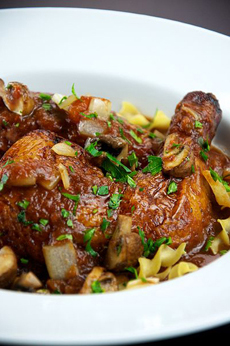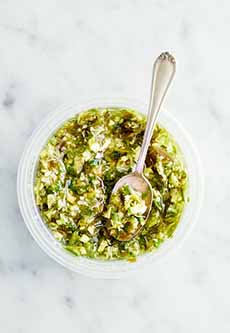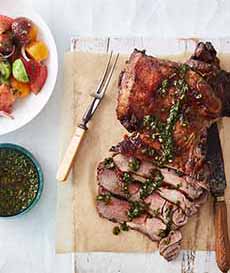TIP OF THE DAY: 8 Sauces From Around The World
|
|
March is National Sauce Month, the perfect time to share this article. Good Eggs calls their article Around the World in 8 Sauces. These aren’t the only international sauces you should consider. Here’s a more extensive list. Our goal today is to provide some inspiration: sauces that can give new pizzazz to your everyday cooking. Ají is a spicy chile that’s very popular in Peruvian cuisine. Ají sauce is “like the Latin American version of Sriracha,” says Good Eggs. While there are green, red and yellow ají chiles and sauces, ají verde (green) is the most popular, served with roast chicken, grilled or seared meat and fish. An herbaceous sauce, the addition of cilantro, lime and jalapeño add heat and zest to just about anything. (It’s the pale green sauce in photo #1.) Try it on ceviche/tiraditio, enchiladas, huevos rancheros, or as a substitute for tomatillo salsa. Use a dollop as a colorful garnish for chili or black bean soup, and on top of the sour cream or crema garnish for them. Buffalo wings have become an American snack staple. Some people use Frank’s Hot Sauce (or other brand) straight; others blend the hot sauce with butter. Good Eggs makes their own version of Buffalo Sauce (photo #2). Bay Area residents can purchase it from Good Eggs. Their recipe is a secret, but combines white wine vinegar, unsalted butter, red bell pepper, yellow onion, jalapeño, honey, garlic and salt. Cacciatore is Italian for hunter, so to prepare something “alla cacciatore” means “hunter-style.” The sauce was so named because it was how hunters would prepare the game that they caught that day—typically, a rabbit. Today a cacciatore dish is most often a quartered chicken from the market. The rustic sauce (photo #3) is made with tomatoes, onions, olives, bell peppers and red wine. Here’s a recipe for Chicken Cacciatore. You can thin the cacciatore sauce with broth or more wine for braises, or reduce it for a pasta sauce. Or, just heat the sauce and serve with grilled chicken or fish. In Italy, fare la scarpetta means to sop up all the sauce left on your plate (or in the pot) with bread. Cacciatore is served with warm, crusty bread for this purpose. Chermoula is a North African sauce, traditionally used with seafood. A mix of fresh herbs and spices, it can be a marinade or a finishing sauce for both fish and meat. We like it to serve it with roasted lamb (photo #8). Chermoula is also delicious with grains and roasted vegetables. Mix it with plain yogurt to make a Middle Eastern-inspired dipping sauce, or thin it out with a bit of olive oil for a bright salad dressing. You can mix up chermoula from cilantro and extra virgin olive oil, seasoned with chili flakes. coriander, cumin, paprika, sea salt. Here’s a recipe. There are numerous types of Mexican mole sauces. Regional preferences result in different ingredients, colors and degrees of heat. Mole poblano is famous for the smoky, sweet flavors of the poblano chiles, blended with unsweetened chocolate, fruit, almonds and warm spices. The result: a rich, earthy sauce that can serve as the foundation of many recipes—grain, meat, poultry, seafood, vegetables. Use mole sauce to dress roast vegetables or grilled meats, to braise chicken or pork, and with enchiladas and tamales. You can also use mole to marinate firm fish like swordfish, or as an alternative to barbecue sauce for Mexican-style pulled pork. Here’s a recipe for mole sauce. Penang curry sauce blends classic Thai spices like coriander, lemongrass, kaffir lime leaf, and aromatic ginger with coconut milk and fish sauce. Balancing salty, citrus, and sweet flavors, it’s a mild curry meant for beef or pork, but it it’s also delicious with with chicken or tofu. Good Eggs sells a Penang Curry simmer sauce. If you’re not in their delivery area, check at your local specialty food store. We’ve never made Penang curry, but we have enjoyed it often, at Thai restaurants. If you want to make it at home, here’s a recipe for Penang Curry that looks very good (photo #5). Good Egg’s scallion ginger sauce is different from the ginger scallion sauce that’s usually served with Chinese dumplings. Their ready-to-buy sauce (photo #6) is a thick paste of scallions, canola oil, ginger and salt. It goes with any savory dish, from poached chicken to grilled veggies, lettuce wraps and more. Simply add garlic to this mix, says Good Eggs, and you’ll have the “holy trinity” of Cantonese cooking: a base for stir-fries or almost any sautéed dish. Bring on the dumplings, or a bowl of rice or other grain! The word “teriyaki” actually refers to a style of cooking in which meat is coated with the sweet and salty sauce, then roasted over an open fire. Today, the word applies to the sauce and anything cooked with it (photo #7). A simple teriyaki sauce is made from soy sauce, mirin, sugar and ginger. Some cooks—and the Good Eggs Kitchen—substitute honey for the refined sugar. And they reduce it into a glaze. Teriyaki is traditionally meant to be a cooking sauce, but when reduced to a glaze, you can also: Are you inspired? We hope this “world of sauces” will make your proteins, grains and veggies sing. |
|
|
|
||










